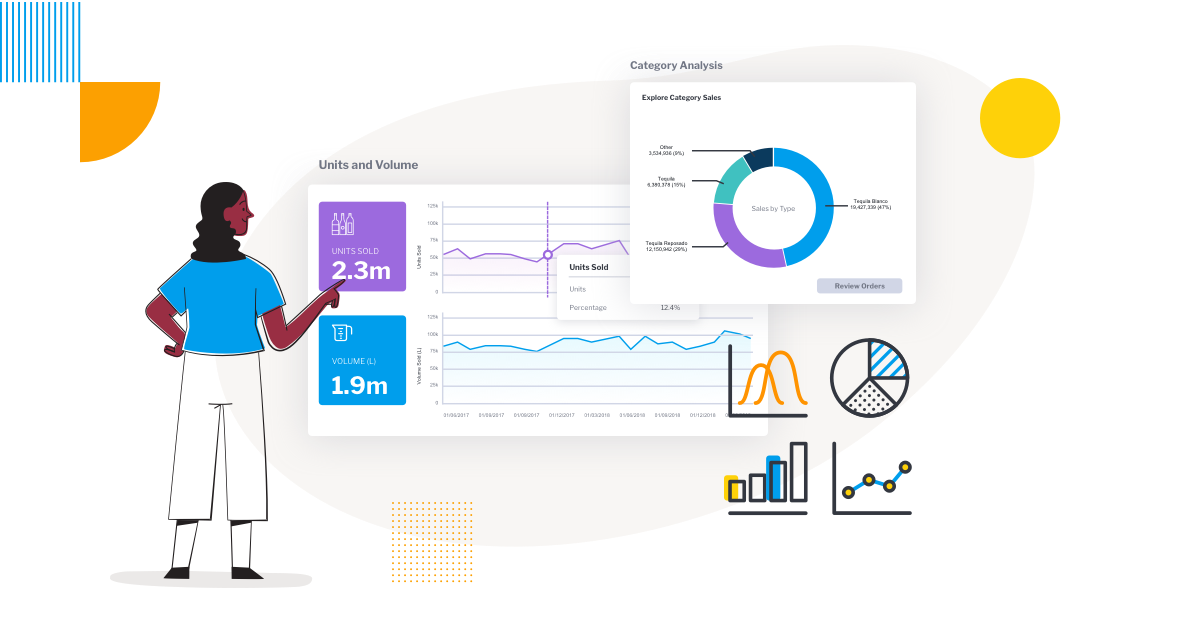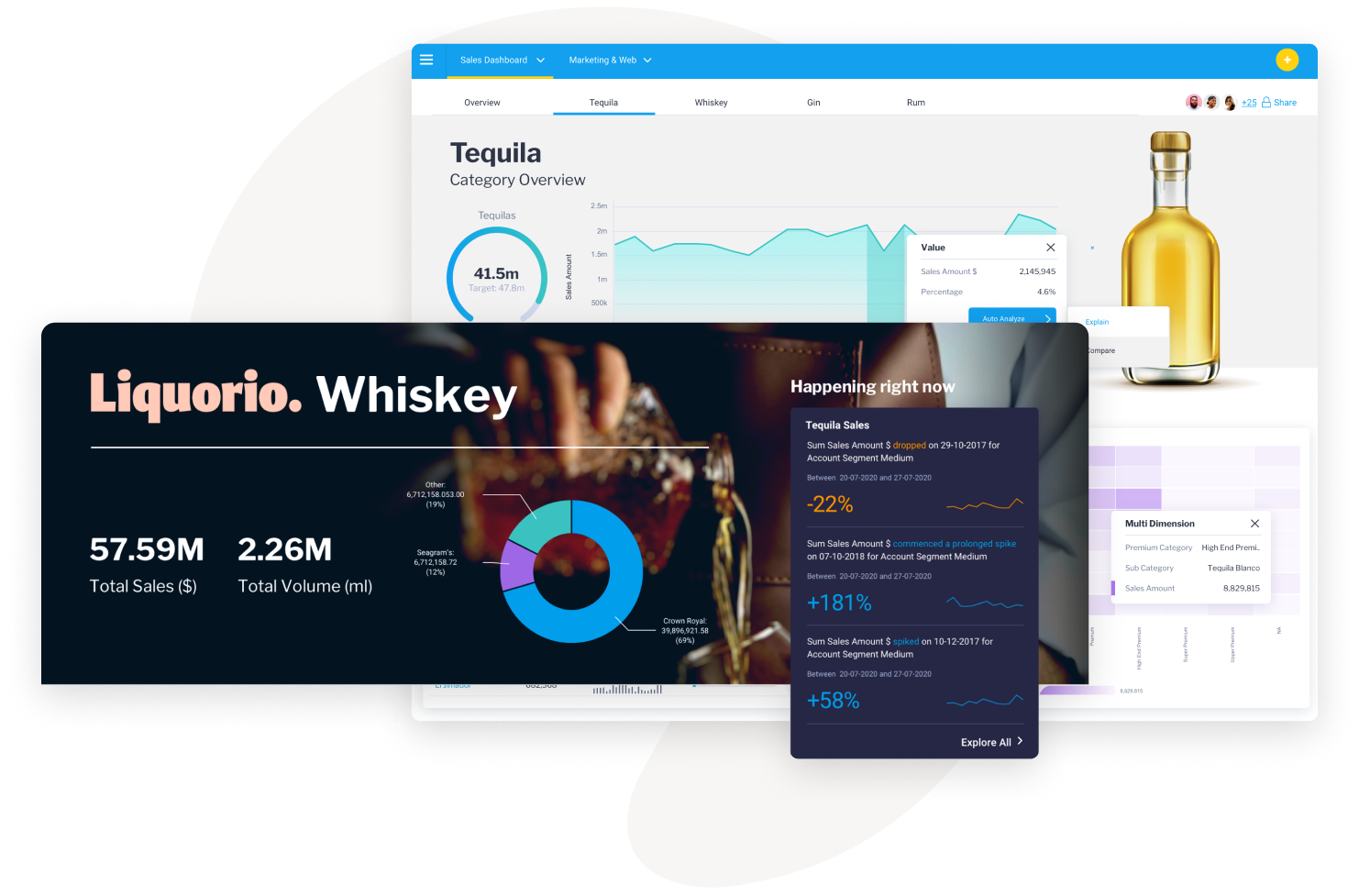
As data takes the center stage for many organizations, data experts and business leaders are figuring out how to analyze it all. The total amount of data created, consumed, and copied globally has reached 64.2 zettabytes in 2020 and forecasted a CAGR of 19.2% from 2022 to 2025. In other words, we need better tools to leverage it!
Organizations today leverage their data to provide better services, build better products, and create new revenue streamlines. However, what holds organizations back from using enormous data available to them is a lack of end-to-end analytics capability. As these businesses expand, regular data management operations become very challenging.
Embedded analytics play an essential role in normalizing data access and driving adoption outside the data and BI teams. Organizations analyzing their data can get insights into their markets, and operations become more competitive and productive.
This article will cover some potential use cases for embedded BI to help you understand how it can benefit your business today. But first, let's go over what it means for clarity.
Embedded BI: A quick recap
Embedded BI is an integration of BI solutions within business process applications - essentially, connecting analytics capabilities like predictive analytics, interactive dashboards, data analysis, reporting, and more, within existing business applications.
It offers an improved user experience by combining real-time analytics and interactive data visualizations. Organizations and software vendors across the major industries leverage embedded analytics capabilities in their core businesses apps and processes.
The difference between it and traditional BI is simple: an embedded BI solutions puts all analysis capabilities into applications directly, rather than being a standalone application. The information is generally managed by a BI platform and placed within the app's user interface to optimize decision-making and data usability.
Here are some reasons teams opt for embedded analytics in their application:
- Increase the time spent within the application
- Improve customer satisfaction and user experience
- The higher user adoption rate
- Adds value to the application
- Contributes to revenue growth
Read More: What Does Embedded BI Really Mean? OEM Reporting Tools Defined
Common Embedded BI Use Cases
Here are some of the most common use cases of embedded analytics today.
1. Self-Service Analytics
Software teams want to provide end-users with increased capabilities to do reporting and analytics. Embedded self-service BI enables users to get information they require and the ability to connect to a number of data sources directly. It helps them analyze data and develop insights with data visualization, BI reports, and interactive dashboards.
Users can share insights via simplified interfaces, helping them make informed, data-led business decisions. Self-service analytics enables users to detect, assess, and action particular analytical opportunities without engaging with analysts for data access or report creation and delivery.
Moreover, it helps increase workplace productivity and enhance insights discovery by ensuring people emphasize the analytical processes properly. They can collaborate and share dashboards and ad hoc reports across the entire organization. End-users can build dynamic report metrics and various KPIs from the embedded BI environment.
Ensuring privacy, security, and data governance are some of the biggest challenges for organizations. Every business has unique requirements, procedures, and data clearances. Successful self-service analytics incorporates an element of data governance as well. It helps ensure that the data shared is accurate and demonstrates quality control.
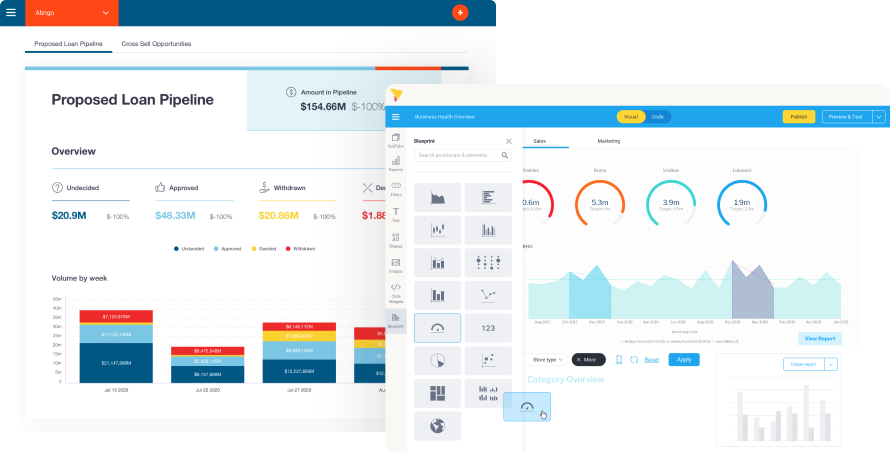
2. Embedded BI for SMBs
Business intelligence platforms and data visualization tools are key for the success of small and medium-sized businesses (SMBs). Businesses generate enormous amounts of data from sales, financial data, customer behavior, inventory, and more. They often store this data in spreadsheets and on-premise databases. Therefore, it's challenging to get comprehensive insights into business performance when they have scattered datasets.
That's where embedded analytics comes in. It brings all scattered data sources together for easy analysis and provides a single source of truth. You can visualize and share insights across the organization with a few clicks. Embedding BI into your business can lower the cost of ownership, too. There's no need to roll out new platforms for every member in your company as capabilities are intertwined into the system’s workflow.
The integration of embedded BI tools enables IT staff to focus on business-centric roles. They have more time to emphasize core priorities by eliminating routine report requests and data capturing. Moreover, using BI dashboards and reporting tools helps make better decisions and provides a clearer understanding of industry trends.
Generally, SMBs don't have time to manually analyze data captured from CRMs, ERPs, and business websites. These processes are labor-intensive, time-consuming, and may not generate desired results. Data analysis via interactive dashboards, data visualization tools, and end-user BI reporting reduces cost and saves time for your staff. BI insights provide performance monitoring and make it easy to detect flaws in the production and correct them quickly.
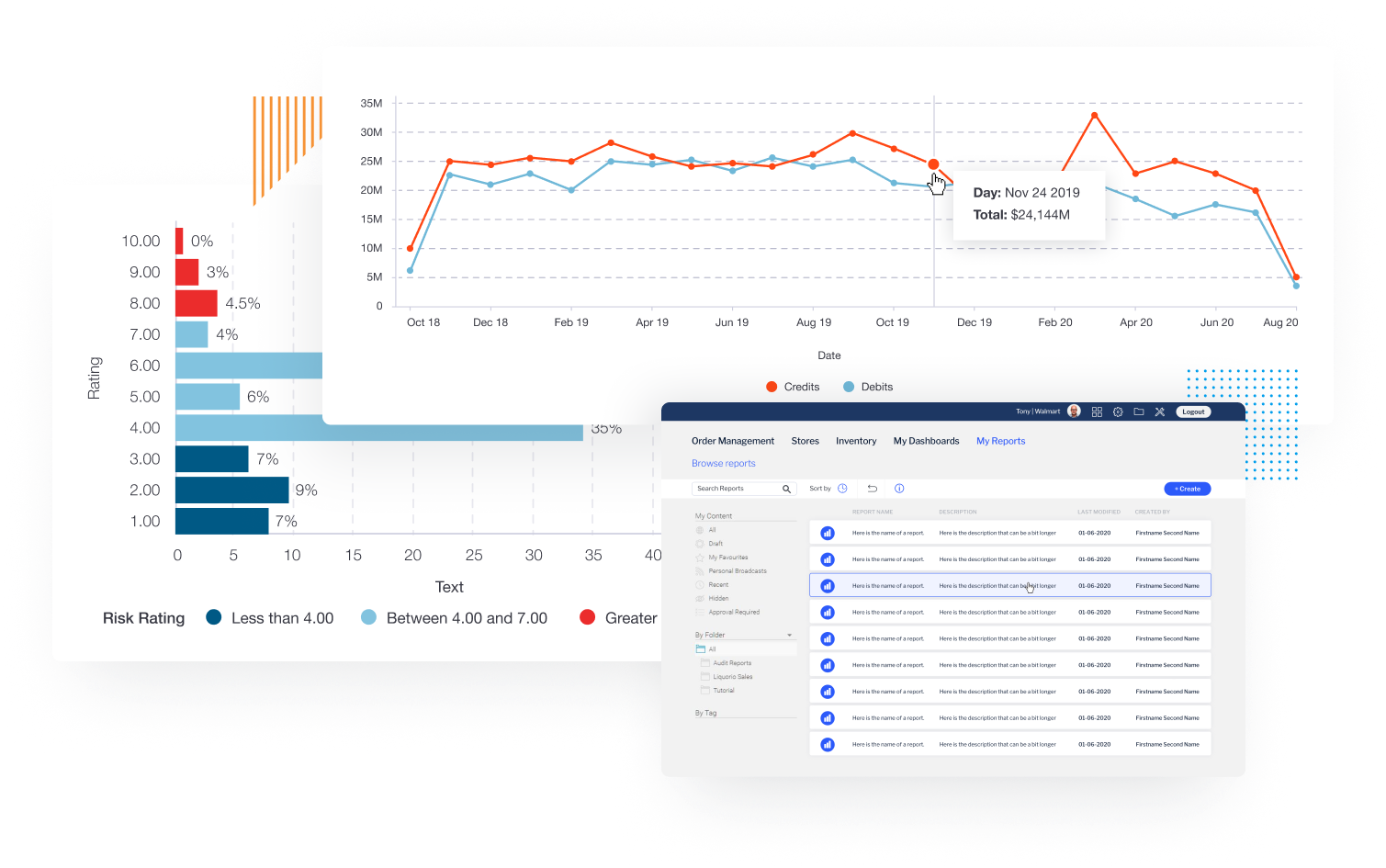
3. Optimize Business Processes
Generally, the volumes of operational data in organizations can be so vast that workers or managers become oblivious to trends. However, embedded analytics tools can gather enormous amounts of data from ERP systems, CRMs, and other business applications. It exposes dynamics within operations that require attention.
For instance, BI tools can detect unbalanced IT networks, supply chain bottlenecks, and inefficiencies in the manufacturing process. These tools provide transactional data that can be used to discover things that are running out of order in your organization.
Moreover, business intelligence helps organizations with internal operations. Using embedded BI to increase operational efficiency is a top concern for organizations. BI-generated insights take assumptions out of equations, allowing to design more efficient marketing campaigns, and create new products based on customer demands.
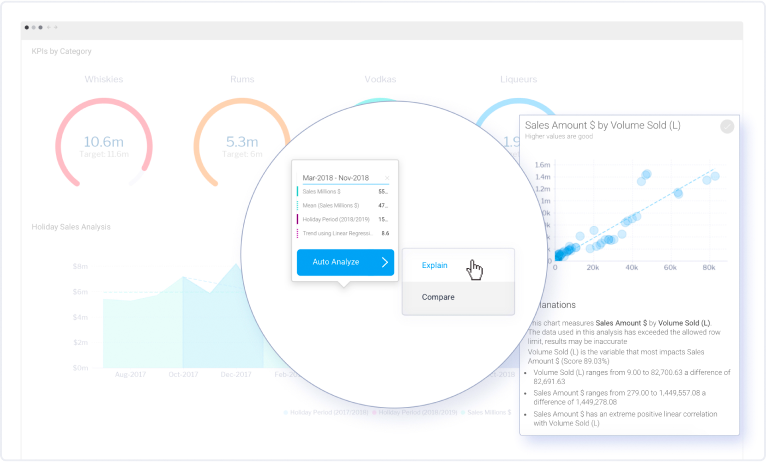
Benefits of Yellowfin Embedded Analytics
Embedded BI is an easy way to make data accessible to users. However, the benefits of embedded analytics provided to businesses are limitless - with the right vendor. Here, we will discuss the most critical capabilities, closely associated with augmented analytics, that Yellowfin has to offer.
- Security: Embedded BI enables administration of users, platform security, platform auditing access, and authentication.
- Governance: It helps track usage and manage how data is generated, and information is shared from prototype to prototype.
- Data source connectivity: It helps users connect to data and ingest it in different storage platforms, both in the cloud and on-premises.
- Cloud-enabled analytics: The ability to create, deploy, and manage analytics in the cloud, depending on both on-premises and in the cloud.
- Automated insights: It's a core element of augmented analytics and the ability to apply machine learning techniques to generate insights automatically for end-users.
- Data preparation: It provides support for drag and drop, the creation of analytical models, and user-driven data from various sources.
- Data visualization: Embedded analytics supports highly interactive dashboards and data exploration through chart image manipulation. It includes various visualization options beyond the bar, pie, and line charts, such as scattered plots, geographical maps, heat and tree maps, and other special-purpose visuals.
- Data storytelling: It's the ability to generate data stores in news style, combining narrative texts, headlines, and audiovisual content based on continuous monitoring of findings.
- Natural language query (NLQ): It allows users to query data using terms that are either spoken or typed into a search box.
- Reporting: This capability gives parameterized, pixel-perfect, and paginated reports that can be scheduled and provided to a large user community.
Learn more: Yellowfin BI - A true self-service analytics suite
Do You Want To Extend Your Analytics Experience?
Organizations need embedded BI solutions to increase user adoption. It helps them benefit from the perspective and knowledge of people in different ways. It also generates insights to make informed decisions in a timely manner. Moreover, these insights help optimize internal efficiency and better adapt to customer requirements by increasing business intelligence.
While embedded analytics makes day-to-day work significantly easier and impactful, selecting the right BI solution is not always easy. However, Embedded BI solutions like Yellowfin enable seamless integrations with business applications. It gives end-users an amazing analytics experience by offering dashboard and analytics reporting.
From user-friendly self-service reporting to pre-build dashboards, Yellowfin has everything you need to provide analytics within your application. It provides true self-service analytics, automated analysis, data stories and presentations, and every visualization you need.
Getting Started with Embedded BI
Extend your analytics with Yellowfin Embedded Analytics Solutions and get a unique set of reporting and analytic capabilities to provide unique customer experiences.
